This, folks, is the 2019 Hyundai i30 Fastback N. No, not the Hyundai i30N Fastback. Yeah, I know, I know… Begat from the much-praised loins of the nine-month-old (already?!) i30N hatchback, the Fastback is all but identical, apart from the obvious differences from the c-pillar back.
It’s an odd ’un in a few ways, the Fastback. First, it represents the one and only fastback – think coupe-esque four-door with a big hatch for a bootlid, basically – that will ever appear in the local i30 line-up, thanks to the expense for Hyundai of sourcing them out of its European plant.
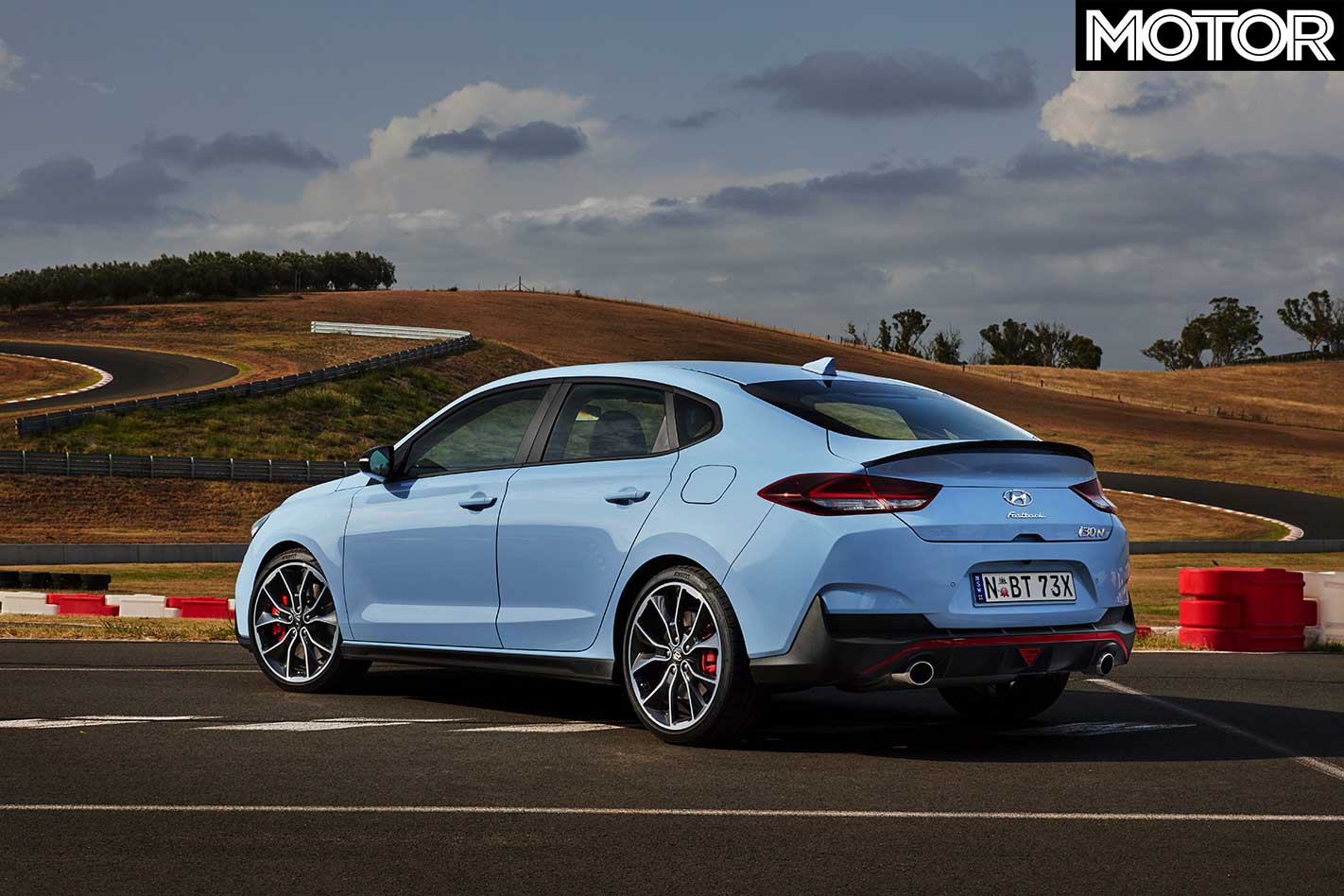
Secondly, while you’d reasonably think that it would be a shoo-in for some sort of self-shifting transmission, no dice… it’s manual only. “The dual-clutch gearbox is coming this year,” smiles Hyundai through clenched teeth, but it knows it’s handing away plenty of sales by not offering a two-pedal version of either this or the i30N hatch.
Speaking of, those two cars are all but the same every area you’d care to name except, of course, in size. The Fastback is 120mm longer (it’s all in the rear overhang) and its 28mm lower in overall height. It also gets more luggage space – 436 litres with the seats up – and it’s 12kg heavier.
The front end is a straight lift from the hatch, while the rear end gets a bespoke bobtail spoiler for the tailgate, a triangular foggie and a diffuser to go with the N-esque bumper. The 19-inch rims are the same, the bespoke Pirelli P-Zero tyres, the rear multilink/front MacPherson suspension layout with adaptive damping is the same, the electronically locking front diff is the same, and the 202kW, 353Nm turbocharged two-litre four-potter is the same.
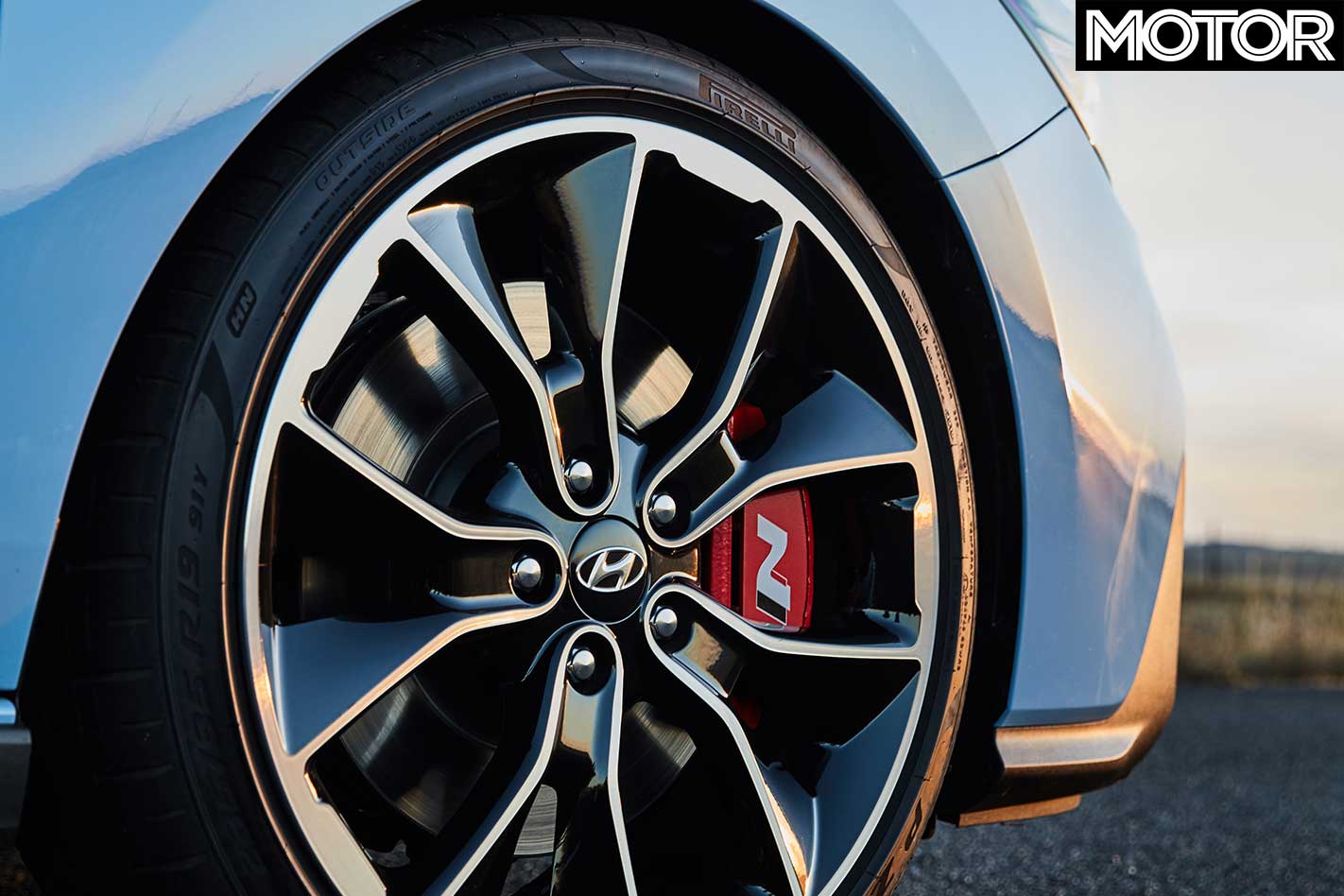
The body-in-white has been tweaked, too, with stronger front shock mounts and 29 extra spot welds to give it a little bit of extra stiffness where it counts. Front to rear weight balance is a little better in the Fastback thanks to that extra 12kg hanging over the rear end, too.
The suspension set-up has been refined again, too, with a softer front tune via longer, softer bump stops and small helper springs above the main spring at the front. The main springs themselves are slightly softer, and the front anti-roll bar is also slightly thinner.
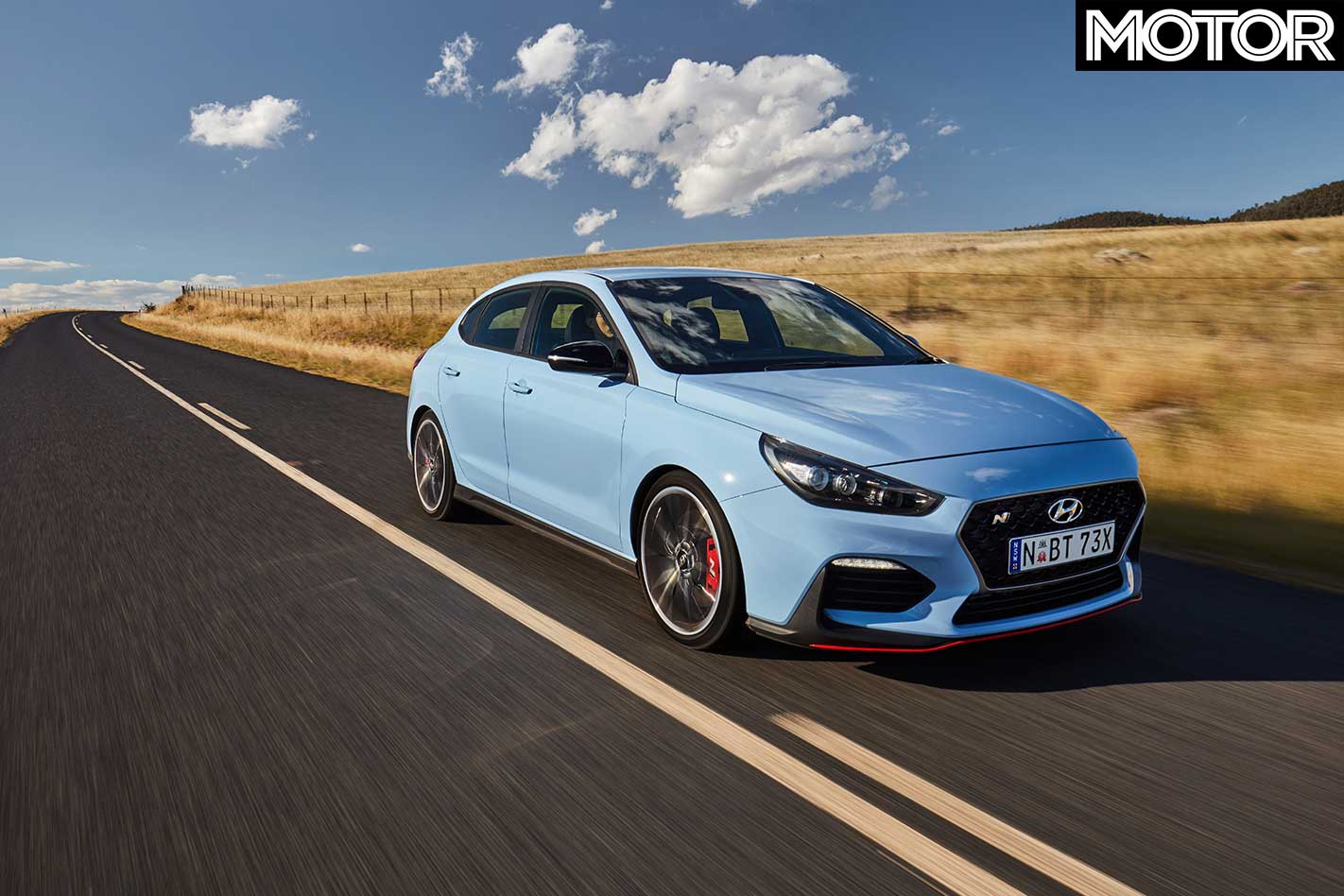
A new tubular steel rear camber arm is designed to ensure the rear wheels hold their camber measurements more accurately under load, and both the suspension and steering electronics have been thoroughly made over. And the nice thing? The i30N hatch will score all these tweaks later this year.
Now, we’re not all that fussed on rear seat room usually, but it’s worth mentioning that while toe room isn’t terrific, head room is surprisingly decent – at least without a sunroof fitted. No vents or device chargers, though. As with the hatch, the Fastback has a removable brace across the cargo area, but the high suspension towers create a narrow aperture for the stowage of stuff like trackday wheels.
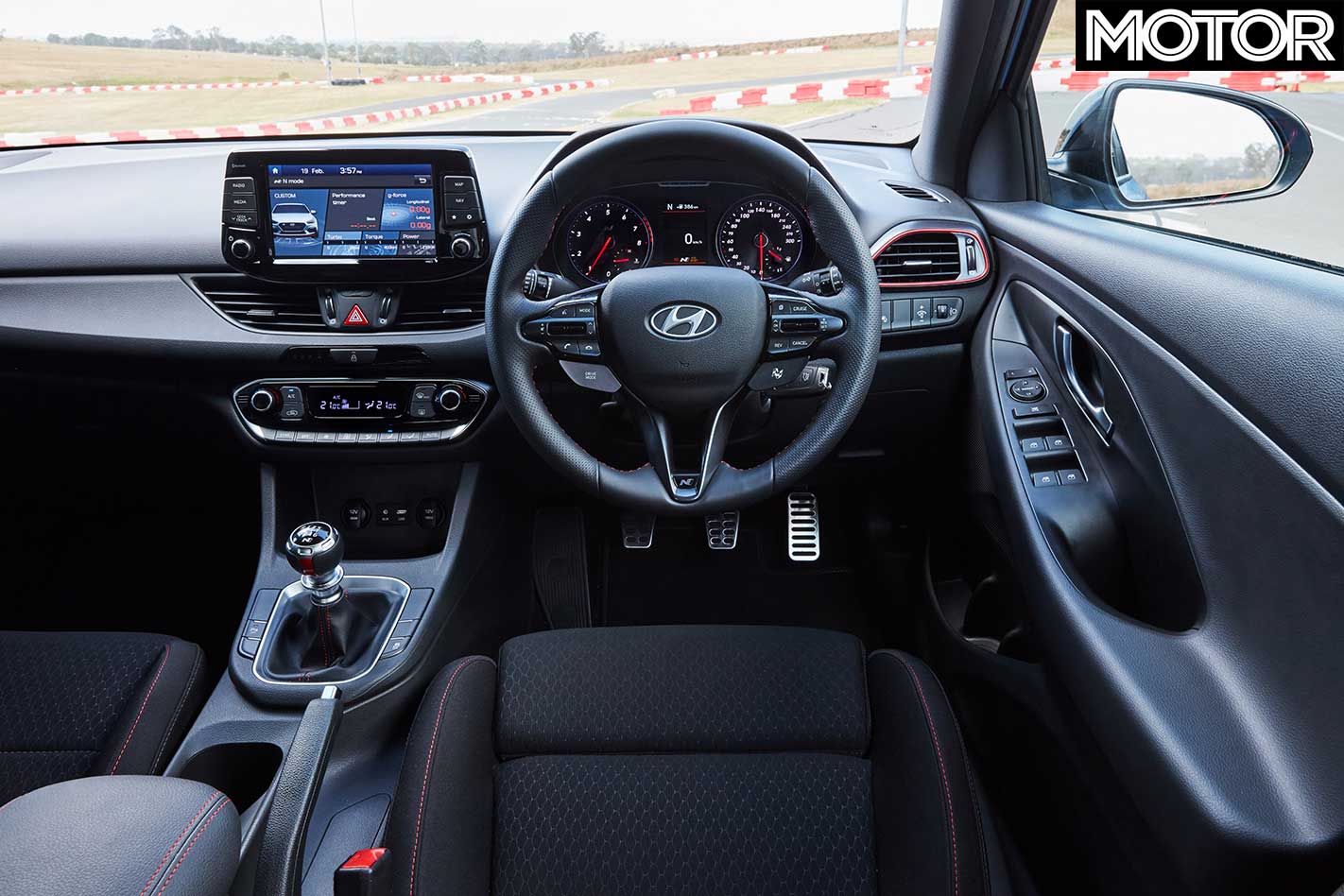
Dynamically speaking, you’re not going to be surprised to read that the Fastback and the hatch are not a million miles apart in feel or pace… but there certainly are subtle differences between the two. The new front end rejig, too, means that the current hatch and the new Fastback will feel different underhand.
Different how? Well, the local suspension team felt that the front end feel on the hatch – already softer than the original Albert Biermann-approved tune – could be made a little softer again to give it a little more bite. To me, ‘softer’ isn’t quite the right word… it feels more fluid and active over repeated small-frequency stuff, like it’s been polished with Mr Sheen.
The difference between the adaptive damper’s softest and firmest modes is still very discernable, and it’s still my preference to leave them in their softest setting via the unchanged N mode setting screen while turning everything (except that silly throttle blip management) up to 11.

The Fastback feels keener to load up its outside tyre than the hatch, but it doesn’t come at the expense of grip on the other side of the car. It’s also possible to feel the electromechanical diff doing its thang in longer sweepers such is the level of interaction through your fingertips, while I reckon there’s a bit more brake feel there, too.
Overall, the Fastback feels more lithe and sinuous than the hatch in the ‘old’ tune, but there’s a playfulness and brightness to the current hatch that these front-end changes – as dialled and as effective as they are – may have taken away. Sure, we all have to grow up and some point, but the larrikin spirit of the i30N hatch is a large part of its appeal – to this old-school hot hatch fan, at least.
So what does the Fastback N bring to the party? More critical mass for the N brand, of course, but it also opens up Hyundai’s hot front driver to a wider, more discerning audience… but boy, I bet they’re missing that dual-clutch box.
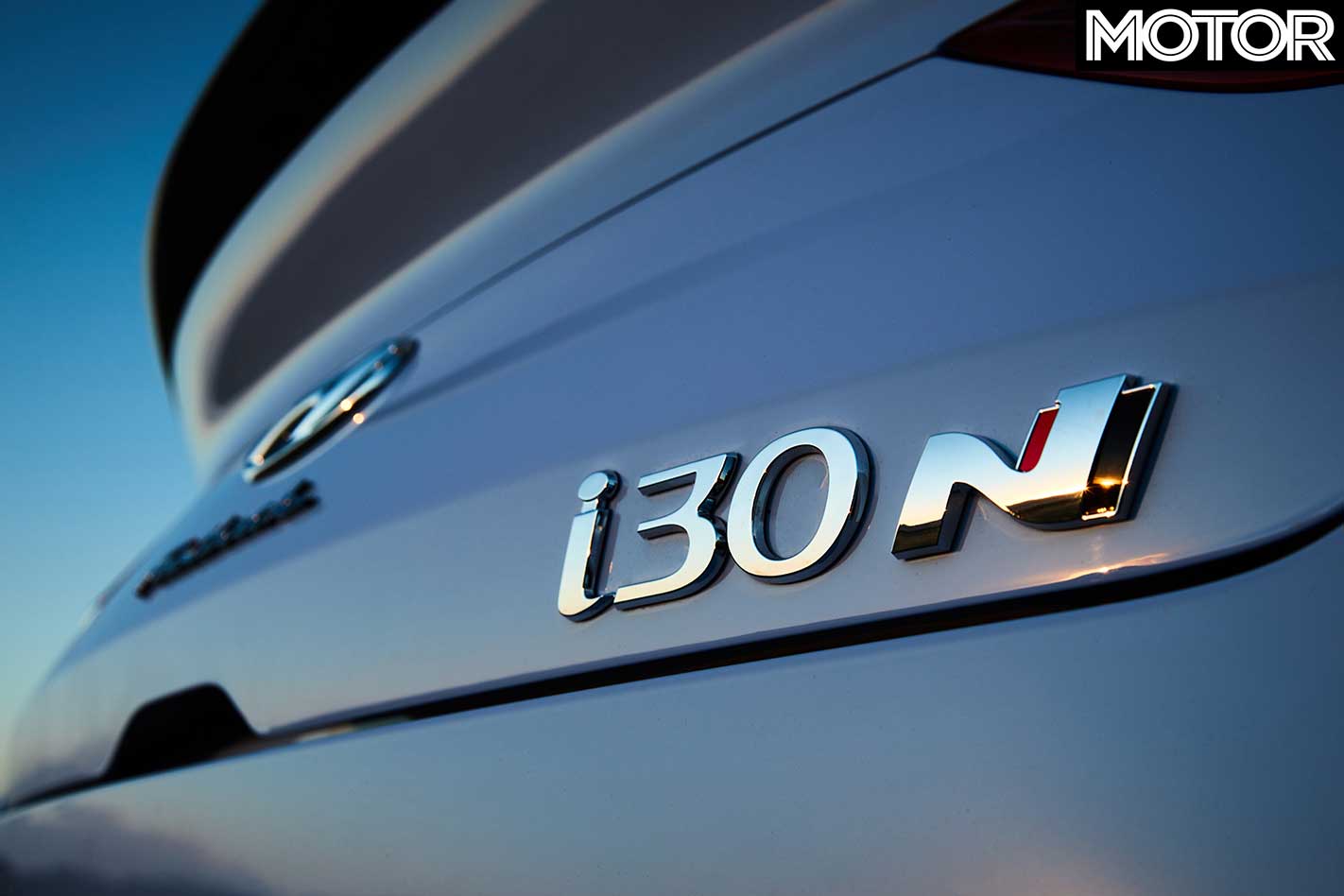
2019 HYUNDAI i30 FASTBACK N SPECS Engine: 1998cc inline-4, turbo, DOHC, 16v Drivetrain: six-speed manual, front-wheel drive Power: 202kW @ 6000rpm Torque: 353Nm @ 1450-4700rpm (overboost 378Nm @ 1750-4200rpm) Weight: 1441kg (dry) 0-100km/h: 6.1sec (claimed) Top speed: 250km/h (claimed) Price: $41,990
Rating: 4 out of 5 stars





